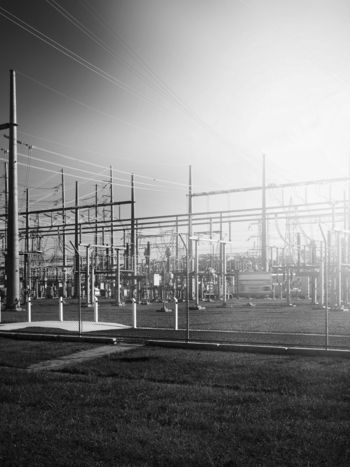Closing the gap in understanding between stakeholders and electrical energy specialists
Global climate change initiatives have driven a substantial increase in renewable electricity generation, often in a distributed form. There are now significant numbers of customers who own generation in the form of roof top solar panels, small-scale wind, and more recently battery storage. In addition, many more customers are engaged in energy efficiency and Demand-Side Management programs to save money or reduce CO2 emissions. Their requirements for electricity supply are therefore changing.
Members
Convenor
(AU)
P. SOUTHWELL
Secretary
(AU)
T. KILLEN
C. COTTRELL (US), O. FROLOVA (RU), M. DE FATIMA GAMA (BR), S. GILL (UK), S. LAURENT (FR), J. LAU (US), K. LEASK (ZA), R. MARAIS (ZA), S. MARONE (US), K. NIKISHIN (RU), M. NEEDHAM (IE), J. PALERMO (US), R. PARSONS (AU), S. RAMSAY (US), C. RAY (UK), I. SAAVEDRA DOTE (CL), G. SCHNEIDER (CA), C. TER BRAAK (NL), C. VERGINE (IT), J. WILSON (UK), S. ZELTNER (DE)
Introduction
Large scale renewable projects are dramatically changing the nature of interactions between power stations. While there is usually strong support for these renewable projects, this is less so when it comes to the need for new transmission or distribution infrastructure. The level of understanding of the mismatch between generated energy and the diverse load profiles and the consequent need for storage or other generation support, sometimes from remote sources, is limited. In addition, the new power system dynamic is creating operational challenges. Where these operational events lead to significant and sustained loss of supply, there is a tendency for some stakeholders to jump to conclusions as to whether the problem is caused by the introduction of renewables, an unforeseen contingency or a more traditional severe weather event.
The number of customer-side technologies is increasing at a rapid rate, and so too are the customer’s opportunities to engage with their energy usage in very different ways. As a result, customers and stakeholders have shown both a growing awareness of, and concern for, the types of decisions being made regarding energy supply and delivery. Many more stakeholders are discussing energy issues and accessing a plethora of information sources. Through technology, they can communicate with other stakeholders and customers to further their learning. Yet in many cases the level of detailed understanding, by stakeholders, of the technical challenges facing the power system is limited.
Issues may often be clouded by competing ideologies as well as political or technology vendor business drivers and preferences. Any or all of these may make it more difficult for the ‘layperson’ or non-technical person (both at the consumer and business level) to fully understand the range of stakeholder implications for the perspectives being proposed. It has also become clear that the range of new entrants in the market often bring perspectives and motivations that are new or different to what utility professionals have experienced in the past.
It is in this context that Working Group (WG) C1.41 was tasked with identifying means to bridge the gap in mutual understanding amongst the technical specialists and the various stakeholders that have a vested interest in the electricity product. This is particularly important where the evolution of the power system is leading to changes in costs and potentially significant changes in jurisdictional policy and energy strategy, which impact not only the customers but also the broader industry environment and economy.
Aspects covered in the Technical Brochure
The WG has produced Technical Brochure (TB) 882 to support energy industry personnel in their efforts to close the gaps in understanding and communicate effectively with stakeholders. The WG recognised that readers of the TB may come from diverse backgrounds with varying levels of technical expertise and experience with stakeholder engagement. The structure of the brochure has therefore been designed to guide the reader to their particular areas of interest. Drawing on the experience of WG members and twenty detailed case studies, the WG identified several tools that have been used to reduce the gap in understanding amongst the stakeholders. In addition, a wide range of simple models and analogies are documented that may help explain the various technical aspects associated with the industry.
Understanding the various perspectives represented by different stakeholders, how they are similar and how they differ is useful in bridging the gaps in understanding among them. The figure below depicts the potential complexity of the overlaps of interest or understanding amongst the various stakeholders.

At the outset of the WG effort, input from industry was that the WG needed to focus on helping energy specialists find more effective ways to get the utilities’ messages across to stakeholders. This included improving understanding of the concerns and views of the stakeholders as these may present a barrier to mutual understanding.
There was a perspective, shared by many on the WG, that the gap in understanding was because of the inability on the part of the stakeholders to understand the message that was being communicated, due to the complex nature of the topics in question. The WG recognized this phenomenon and identified several analogies, examples, and suggestions for effectively communicating highly technical topics to lay/non-technical stakeholders.
Beyond that, the WG examined the gaps in understanding amongst the various stakeholders across a wide range of technical issues related to the power system, its changing nature and how these changes are developing. The WG reviewed how stakeholders perceive this gap and what is being done across the world to improve the level of understanding, particularly of non-technical stakeholders. Our WG members have both technical and non-technical backgrounds with the latter having a speciality in communication and/or stakeholder engagement.
It is important to note that the WG was not trying to define a "good stakeholder engagement process". Instead, the goal was to make concrete progress towards improving mutual understanding, for both in sector specialists' understanding of what stakeholders want from them and stakeholder understanding of the key issues.
The WG recognised that one of the key aspects in closing the gaps in understanding is effective communication. The WG explored a wide range of practices, tools and techniques in stakeholder communications and engagement, used across the global energy industry. A broad range of stakeholders were identified, noting that the number and types of active stakeholders continues to grow. Generalized areas of concern and focus for each of these stakeholder types were examined. This picture of the cross-section of stakeholders helped inform the development of the models and communication aides included in this TB. In addition, the WG members prepared and analysed 20 separate case studies from around the globe which highlighted both successful and less than successful efforts in closing the gaps in understanding.
A key realization, stemming from this work, is for energy industry leaders to acknowledge that the utility needs to take full responsibility for effective communication and closing the gaps in understanding. They are the ones who bear the main consequences of failing to close these gaps.
A principle finding of the WG is that effective communication with stakeholders is the essential key to closing the understanding gap. Effective communication happens when there is two-way listening, meaningful engagement and consistent follow up action.
As a result of this finding, the TB also identifies strategies used effectively by utilities in engaging with and listening to their stakeholders, even under extremely difficult situations, and even in relationships that have historically been hostile.
The case studies and communication aids should serve readers well, as they consider how best to work with stakeholders to improve the level of mutual understanding.
The TB is organized to support the readers in finding the areas of greatest interest or greatest value.
Chapter 1 introduces the TB and the WG.
Chapter 2 presents the scope of work undertaken by the WG.
Chapter 3 explains how the work is organised, the structure of the TB and how to use the Brochure depending on the reader’s level of experience and interest.
Chapter 4 identifies the stakeholders, and the likely varying levels of understanding and overall processes and methodologies that have been shown to successfully reduce the gap in understanding amongst them. It defines a list of tools that can be used to help with communications and recognises the likely overlaps amongst stakeholders.
Chapter 5 discusses some of the key issues affecting the power system and how they impact the interactions amongst the stakeholders. Topics include, the impact of renewables, major power system disruptions or blackouts, major infrastructure projects, long term plans, public policy determination and implementation and significant technological change.
Chapter 6 contains the bulk of the material and examines in detail twenty case studies. The gaps in understanding are identified and then the processes that were used to bridge the gaps are described together with the level of success. These case studies are summarised in Appendix C. The case studies have been grouped into the following categories:
- The challenges of communicating the impact of renewables to a wide audience;
- Communicating with large groups of stakeholders;
- Engaging with stakeholders on the need for, benefits and impacts of major transmission reinforcements; and
- Removing relationship barriers in stakeholder engagement.
Chapter 7 provides a collection of analogies and models that can be used to help explain the various technical aspects of a power system, including its design and operation.
Chapter 8 provides conclusions.
Appendix A is a glossary which provides definitions of the various technical terms used in the Brochure.
Appendix B presents a ‘Cake Analogy’ to help understand the changing nature of the power system.
Appendix C contains the summary of the case study groupings.
Conclusions
As a result of the work carried out, in particular the development and analysis of the case studies, the WG was able to draw several significant conclusions:
- The number and diversity of stakeholders is growing as the power system evolves to incorporate new technologies and the increasing use of renewables;
- WG members noted that significant value can be gained from new insights obtained by sharing their experiences and through review and discussion of the case studies;
- There is a clear need to simplify the descriptions of technical aspects associated with the planning, design, construction, and operation of power systems, to improve understanding across all technical and non-technical stakeholders;
- Two-way listening and conversation rather than presentation are critical to mutual understanding, and thus success;
- An examination of the case studies should help readers to understand how the engagements were undertaken for each example, and what learnings they can apply to their own situation;
- Having ready access to several models that help explain some of the technical aspects associated with the power system, can be very useful. In addition, the use of accepted industry definitions can be helpful for effective communication and improved understanding; and
- It was recognised by the WG members that good engagement amongst stakeholders is a critical factor in the successful development of power systems and the information in this TB has been provided to assist with this important work.
The WG came to the additional conclusion that the gap in understanding can reside in the energy specialists, the other stakeholders, or in both parties and this is influenced by their specific interests. When we examined what works well and what does not work as well in the case studies, we saw that listening to stakeholders about what matters to them is an essential aspect of closing the gap in understanding and improving the probability of a successful project implementation.
The principle finding of the WG is that effective communication with stakeholders is the essential key to closing the understanding gap. Effective communication happens when there is two-way listening, effective engagement and consistent follow up actions!
As a result of this finding, the TB also identifies strategies used effectively by utilities in engaging with and listening to their stakeholders, even under extremely difficult situations, and even in relationships that have historically been hostile.
The case studies and communication aides should serve readers well as they consider how best to work with stakeholders to improve the level of mutual understanding.




